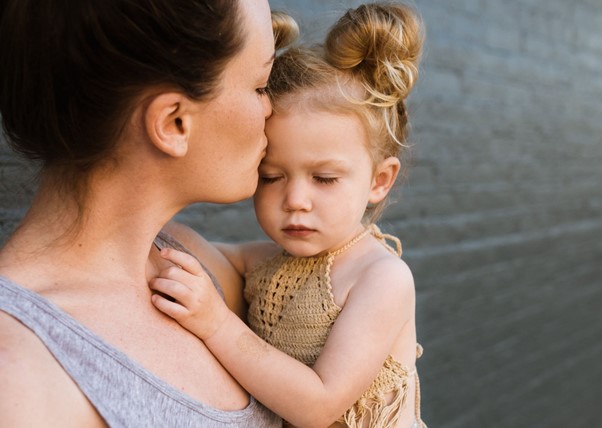Divorce is undeniably difficult, but when children are involved it becomes infinitely more complex and stressful. When you have children, you will need to communicate with your former spouse for many years after the divorce. While every divorce is different, it’s important to know generally what to expect while navigating a divorce with children.
Separation and divorce can bring about a lot of unchartered territory for everyone involved. Arming yourself with some information ahead of time can ease the pain at least somewhat. Here are some things to consider when heading down this path.
Breaking the News
Telling your children you’re getting a divorce is no easy task. The best approach in breaking the news of your divorce to your children is to be honest and direct.
Once you’ve decided to divorce, the first to know should be your children. As much as you may trust family and friends, you don’t want to take the chance that your children find out about your divorce from anyone other than you.
Set aside a time when you can sit down with your children without distractions and in a place where your children will feel most comfortable. It may seem like a good idea to share this news when your children are enjoying a fun event or during a holiday to distract them, but this is not the case. You don’t want them to associate those events with the trauma of your divorce.
Keep it simple. There is no need to go into every ugly detail. The most important thing to convey is that this decision will not affect how much you love and care for your children. They will need to know what will be different about their lives and what will stay the same.
Hearing that your parents will no longer be living under the same roof is a traumatic and life-changing experience for children. It’s important that you assure them that you love them no matter what. Go over everything with the other parent in advance so that when it comes time to tell your children you’re already well-informed with a plan in place.
The Process
Once you’ve decided to separate from your spouse, there may be a period of time before you’re actually able to officially divorce. During this time, one of the biggest decisions you will make will be settling the custody of the children.
In many cases, parents can come to an agreement as to how the custody arrangements will work. In cases of conflict where the parents cannot come to a mutually agreeable understanding, mediators can help find a solution that will work for everyone. In extreme cases, the matter can be taken before a judge.
There are many different ways parents can share custody of their children. The important thing is to find a schedule that keeps the needs of the children before the wishes and wants of everyone else. There are resources available to help you choose a path that’s right for you.
Children First
No matter what your relationship is with your former spouse, you should both agree that your children’s emotional and physical well-being should always come first. This process is going to be difficult enough for your children without them having to deal with parents who are constantly arguing.
There are several things you should avoid when dealing with children after a divorce. Never argue or belittle your former spouse in front of the children. If you find it difficult to communicate peacefully, make sure you take it far away from the earshot of your kids.
Never use your children as messengers or ask them to act as a go-between for you and the other parent. This causes the children to feel like they are expected to take sides between two people they love a great deal. In a similar vein, never grill your child for information regarding the other parent.
Being civil may be the last thing you’re in the mood to do, but for the sake of your children, it is essential that you put aside your differences and choose the paths that will serve their interests best, even if it means swallowing pride. While there are no one-size-fits-all solutions, keeping the children’s needs above everything else should be your primary goal.
Co-Parenting
Though you are no longer married, you are still parents and always will be. First and foremost you will need to establish open communication about schedules, vacations, and other relevant information.
Children thrive on routine and predictability. As much as is possible, keep their regular mealtimes, bedtimes, and other schedules unchanged from your house to theirs.
It can be tempting for both parents to be a lot more lenient or to overindulge their children after the divorce. While it’s important to be understanding of the turmoil your kids are facing, maintaining rules and discipline will actually go a long way in making them feel more secure.
Also, staying consistent with rules and discipline between both houses will help your children know exactly what is expected of them. Keeping this sense of normalcy for them will help them adjust to their new life.
Another thing to consider will be holidays and who will have the kids for which ones. It’s best to have a schedule laid out in advance so there’s no confusion or added anxiety. Many parents will simply swap from year to year.
With proper planning, there’s no reason that your new traditions won’t become just as special as the old ones.
Managing busy schedules for your kids can be a hassle even for parents who are still married. This can be especially difficult after a divorce. Many parents find that using a co-parenting app can help manage communication and scheduling.
Working together to put the children first in spite of your differences will also set an example for your kids on how to manage conflict and resolve issues peacefully.
Shared Costs
Even though you’re no longer living in the same home, you will still need to share the costs of raising the children. Things like food and shelter may be addressed in child support, but there are other things that will arise where you will likely need to split the cost.
Items like shoes and clothing will be an ongoing issue since your children will be constantly growing. At one point all of their clothes resided in one place. Now that you are living separately, you may find that you’ll both need more clothing at your place so your children will have plenty to wear.
Activities like sports, music lessons, and equipment that come with these activities can start to add up if only one parent is paying. Keep all receipts related to these expenses and choose a time periodically to go over how much each parent has spent so that the costs can be equally divided.
Other things like doctor visits, orthodontics, or other fees will need to be discussed ahead of time as well. Putting together an expense budget or parenting plan may help take the stress out of communicating about money.
Counseling
In many cases, parents and children alike will need some help processing all of the emotions that come with a divorce. For parents, this can provide a useful place to take their frustrations about the divorce. Having a healthy outlet for all the emotion that comes with divorce can mean you can guide your children through their grief.
For older children, the process of going through a divorce can bring about a host of issues. It’s not uncommon for children to act out or perform poorly in school. It can be a good idea to have them see a professional counselor to help them work through their thoughts and feelings about the divorce.
Watching their parents go through the process of ending a marriage can cause emotions in your children that they cannot define or understand. With the help of a therapist, you can help them put words to what they are feeling. When these emotions are defined, they can be handled in a healthy and productive way.
Helping children cope with divorce is a difficult process, so there is a great benefit to seeking out counseling.
Seek immediate help when you see the problems in your children or yourself worsen over time. If your child is acting in violent ways or threatening to hurt themselves or others, it is crucial to get them help as soon as possible.
The same is true for you. If the feelings of depression significantly interfere with your ability to care for yourself or if you begin to have thoughts of suicide, reach out to a professional immediately. You don’t need to go through this season alone.
Outside Help
Sometimes divorce comes with feelings of extreme hostility between the parents. When it’s impossible for the parents to communicate effectively for the benefit of the children it may be necessary to call in mediators to help you decide what’s best for your kids.
Though this type of help will come with added cost, it may be worth the expense to help you get started on the process of laying out a new normal for everyone. After some time has passed and wounds have healed, you can try again to communicate with each other one on one.
The most important thing is to protect your children from any hostility that lies between you and the other parent. Putting them first before your own feelings will minimize the trauma and stress they will go through.
Take Care of Yourself
There is a good reason why airlines tell you to put on your own oxygen mask before you help your children. You can hardly be of any use to them if you’re struggling to breathe yourself.
Going through a period of depression is completely natural after the end of a marriage. That’s why it’s more important than ever to pay attention to your physical and emotional needs.
Eating a healthy diet, drinking water, and getting plenty of exercise is always good advice. These things are even more important when you’re going through a time of stress.
If you are sharing custody with your former spouse, times without your children can be a good time to focus on hobbies and activities you enjoy. It may feel strange to be without your children initially, but you can use that time to engage with friends, travel, garden, or anything you’ve been wanting to do but haven’t found the time.
It’s also quite normal to feel lonely after a divorce. This is a time to be sure you are leaning on family and friends for support.
Even very small things like having a regularly scheduled outing with friends or taking a daily walk can boost your mood and fight feelings of depression. When you are feeling healthy you are even more capable of helping your children through their struggles.
Divorce with Children
Divorce can be a painful and traumatic event for everyone involved. When it comes to making sure your children navigate this process in a healthy way, there is no such thing as being overprepared.
There are many resources and apps that can help you along the way. For help with scheduling and communication, check out the 2houses app.
During this time, it is important to know that you are not alone. With the help of counselors, mediators, apps, family, and friends, you can eventually find your way to a new normal.















